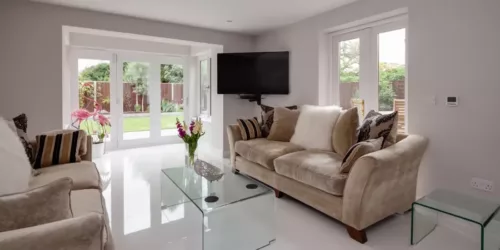Trickle Vents in Windows: Are They Still Needed?
- Update to Building Regulations requires trickle vents to be fitted
- Learn more about these important pieces of equipment
- Alternatives to double glazing trickle vents
When it comes to ventilation, trickle vents in windows are a discreet element that allows fresh air to be drawn into a home. These window vents help to facilitate temperature regulation and prevent condensation appearing on window panes. While an influx of fresh air sounds like a bad idea for heat retention, they work to only provide background ventilation and can be opened or closed as you deem fit.
This article will go over what trickle ventilators are and will answer whether they are still needed. It will look at what they do, how they work and what sizes they need to be installed. The article will also consider alternatives for double glazing trickle vents, in case you don’t wish to have them fitted.
At a time when the energy efficiency of homes is important, parts of your home, such as windows, need to be working properly. Professionally installed double glazing has the potential to reduce your yearly heating bills by at least 10%, and this is with trickle vents installed.
Are you thinking of upgrading your windows? Fill in our quote comparison tool to see how much you’d pay in your area. It only takes a minute.
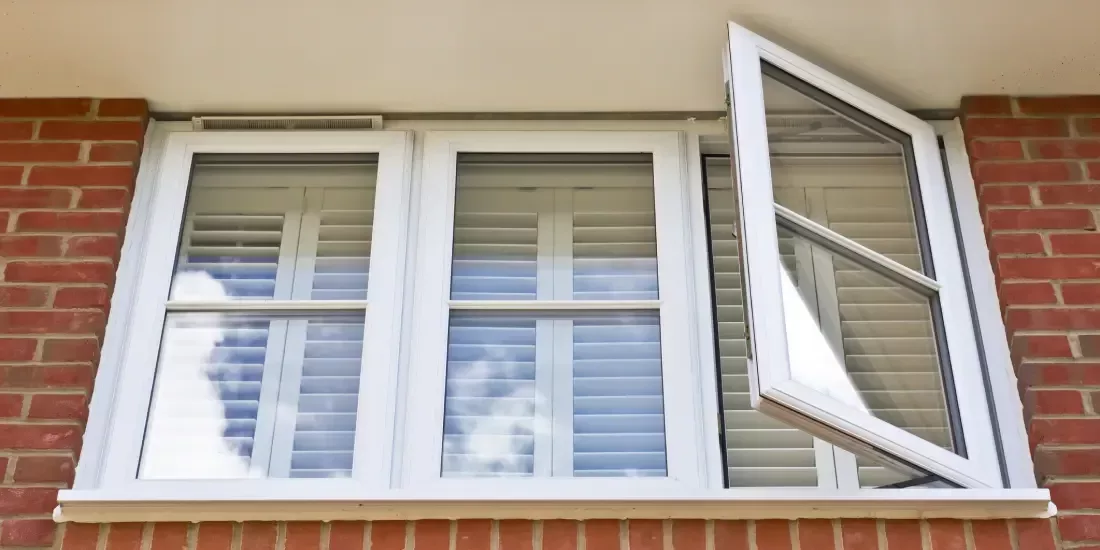
What's On This Page?
Click the links below and head straight to a specific section of the article.
What Are Window Vents for Double Glazing?
Usually located at the top of the window, trickle vents are closable passages that allow a free flow of air in and out of the home without compromising security. They can be fitted to the window frame or even attached to the glazing itself. Those attached to the frame are known as slot vents, while those fitted to the glass are known as glazed-in vents.
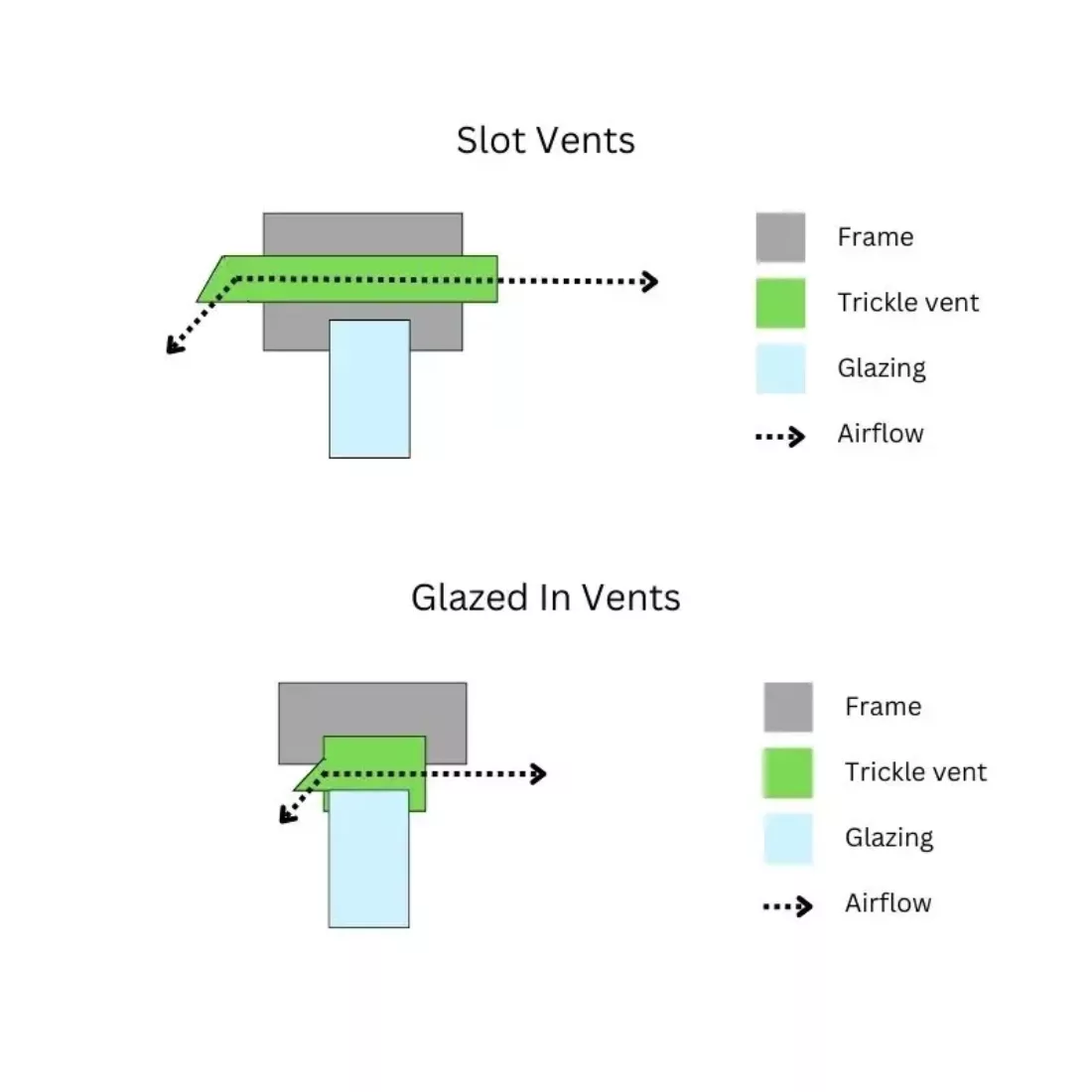
These important pieces of equipment serve a purpose, and that is to prevent poor ventilation. Older windows may not have them fitted as standard, but thanks to an update in Building Regulations in 2022, they are now required if replacing your windows or fitting new ones. Trickle ventilators can be fixed to your windows yourself if you wish to install them.
You can install window vents for double glazing or triple glazing, as they are designed to work with all window types. Most trickle vents in windows can be closed, but some designs exist that are constantly open.
Why Use Trickle Vents
The idea behind trickle ventilators is that they:
Prevent health conditions resulting from stale air
Provide a minimum level of background ventilation
Prevent condensation appearing on windows
Stop issues with mould and damp
The art of house building has changed dramatically over the years, which is why Building Regulations are regularly updated. Older, Victorian homes needed gaps in walls, floors and doors to provide adequate air ventilation for coal and gas powered heating systems. Nowadays, air tightness has much improved to keep the valuable heat inside, but this comes with its own problems.

A home that can’t allow air to adequately pass through it is a danger because it can lead to problems with health and the indoor environment. Stuffy indoor air can present breathing problems and heart conditions, so trickle vents help remove this problem by allowing for the air to be replenished from outside.
Likewise, with the chance of condensation removed, issues with damp and mould are also lessened. In a home without a free flow of air, mould spores can become ingrained and further exacerbate breathing problems.
Before window trickle ventilators became necessary, the main solution was to open windows to provide ventilation. However, this is not always possible and causes a security risk. The main benefit of double glazing trickle vents is that they work continuously in the background so you don’t have to worry about manually providing ventilation.
Building Regulations for Trickle Vents
Approved Document F is the part of Building Regulations that is concerned with background ventilation in homes. On 15th June 2022, this was updated so that the majority of new windows and doors being replaced would need double glazing trickle vents fitted. The main reason given is to prevent an excessive amount of condensation which would damage the structure of the property.
When replacing windows, trickle vents must also be replaced and can be no smaller than existing fittings. The minimum level of ventilation must not be compromised or reduced. Your installer has to sign off the work when it’s completed and it must comply with Building Regulations for this to happen.
The minimum requirements for trickle vent installations can be seen in the table below. This depends on whether the home is across multiple floors or a single storey.
Larger vents are needed for single storey properties, especially in habitable rooms and kitchens, at 10,000mm². A home across multiple floors will only need 8,000mm² in these rooms. Bathrooms, on the other hand, can cope with 4,000mm² trickle vents, no matter the property.
Warm, moist air is produced in the kitchens and bathrooms, so adequate ventilation is needed to make sure this is removed. In habitable rooms, where the majority of time is spent, heat is produced from bodies and central heating, leading to stuffy air. Double glazing trickle vents allow this stuffiness to be replenished by fresh air on a frequent basis.
Trickle Vent Exemptions
There are always exceptions to the rules, and double glazing trickle vents are no different.
You may not need to have trickle vents fitted to your windows if the following applies:
You live in a listed building
You live in a conservation area
Your property was built with a vapour-permeable material
You have a mechanical ventilation system installed
You are only replacing 30% or less of your home’s windows
An approved FENSA registered installer will be able to advise you on your options if any of these are the case.
Mechanical Ventilation
Newer buildings tend to have mechanical ventilation systems fitted, although it’s possible to install this in any home. These come in several types but all provide a constant amount of background ventilation. If you have this installed, you will not need trickle vents as this will be running constantly in the background.

Mechanical ventilation with heat recovery (MVHR) is a suitable alternative to getting trickle vents. It uses heat from outgoing air to warm up any incoming fresh air without compromising the quality. This saves you on your heating costs as MVHR is so efficient that it can recover up to 90% of heat lost through the process.
Trickle Vent Advantages and Disadvantages
Advantages
Reduce condensation
Prevent issues with mould and damp
Controllable
Improved indoor air quality
Secure
Prevent frames from cracking
Disadvantages
Slightly reduces energy efficiency
Can let in noise
Maintenance involved
While window trickle vents are excellent for controlling free flows of air, reducing condensation and preventing mould and damp, they are a secure option. Leaving windows open all day or on a night-latch is not best practice for a secure home, and this will leave you without any heating.
Additionally, double glazing trickle vents can help with temperature regulation with cheaper frame materials. This prevents them from taking on too much heat and cracking under pressure.

On the downside, any current of air coming into the home will reduce the energy efficiency. This means you’ll need to use your heating a little more to reach the same comfort levels you’d normally expect. As well as this, window vents don’t help with noise reduction from outside.
Lastly, because trickle vents are exposed to the elements all the time and carry out moisture-laden air, they will occasionally need a clean. A build-up of mould can occur, which will compromise the quality of the incoming airflow. The little grilles can be tricky to clean, especially if they become blocked.
Are Trickle Vents in Windows Still Needed?
Yes. The update to Building Regulations requires all new window installations to fit trickle vents. When upgrading old windows without vents, these will need to be fitted to comply.
What If I Don’t Want Trickle Vents Fitted?
Unfortunately, there’s no wiggle room to get out of having window vents for double glazing fitted. While there are exceptions to the rules, such as listed buildings or those in conservation areas, trickle vents are legally required for your installer to sign your windows off.
Some people have specified that they should be able to sign a waiver to agree that they do not want these vents installed. Others believe that they should be able to install them at a later date. In reality, this is not possible. All work needs to comply with Building Regulations, and your installer cannot sign it off without properly doing their job. Any installer who hasn’t carried out their duties in full will have action taken against them. This includes not fitting trickle vents if asked.
Do you need new windows? Find out how much you’d pay by comparing local quotes. Click on the button below to get started.
Related articles
View all Glazing articles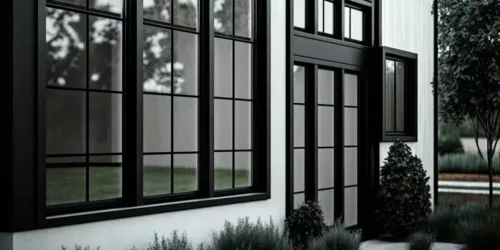
How Much Would It Cost to Double Glaze a 3 Bedroom House?
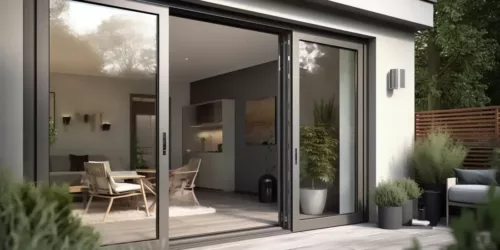
A Complete Guide to Double Glazing Doors

Replace Your Double Glazed Unit - A Useful Guide
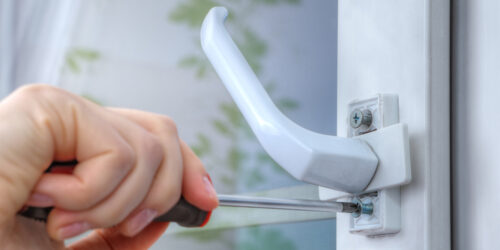
Double Glazing Repairs – All You Need to Know

Energy Efficient Windows: A Guide To Better Window Energy Efficiency
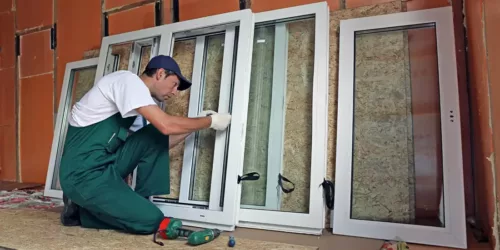
Double Glazing Repair – Is It Worth It?
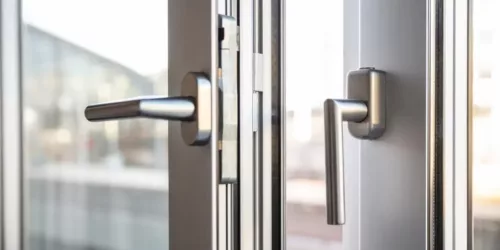
A Comprehensive Guide to Window Handles
